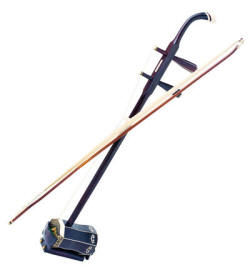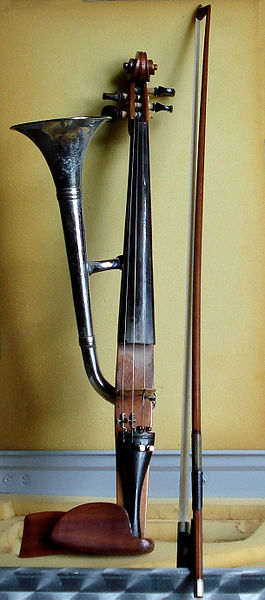We are all familiar with the Western violin, but what about violins from other cultures? Check out these five violins from around the world.
1. Erhu, China
This traditional instrument from China is a bowed violin with two strings. It is popularly used in both solos and ensembles and can be very versatile. The strings are typically tuned a fifth apart (D4 and A4) and the violin has a three and a half octave range. The resonating box of the instrument is covered in python skin. The horsehair bow is actually woven between the two strings and the strings never touch the neck of the instrument when depressed. The strings are traditionally made from twisted silk.
To watch a video of the erhu being played, click here.

2. Hardanger Fiddle, Norway
The Hardanger Fiddle is very similar to the Western violin except that it typically has 8-9 strings. Four sit on the bridge and are bowed in the traditional manner, but the rest of the strings extend under the bridge and are not bowed. Instead, they produce sympathetic vibrations while the other strings are bowed.
The instrument also has a flatter bridge than the Western violin which enables the player to play more strings at once. Hardanger fiddles are traditionally decorated with mother of pearl and bone inlays.
The Hardanger Fiddle was featured in Howard Shore's soundtrack for The Two Towers.
To watch a video of this instrument in action, click here.
3. Morin Khuur, Mongolia ("Horse Head Fiddle")

The "horse head fiddle" is a traditional instrument of Mongolia and its sound is described as being evocative of the breeze or of a horse neighing in the distance.
The two strings on the instrument are typically tuned either a fourth or a fifth apart. The "male" string consists of 130 woven horse hairs from a stallion; the "female" string consists of 105 hairs from a mare.
The resonating chamber of the instrument is typically made from wood, although it is often covered in camel, goat, or sheepskin. To hear a morin khuur being played, click here.

4. Koni, Vietnam ("Vietnamese Mouth Violin")
The Koni is made from a carved wooden body with two strings. The body of the instrument does not have a resonating chamber; rather, a disk is actually held in the player's mouth. The mouth then becomes the source of resonance for the instrument and provides a unique variety of ways for the performer to control the sound.
To watch a performance of the mouth violin, click here.
5. Horn-Violin (Romania)
_with_its_(normal)_violin_bow-resized-600.jpg?width=148&height=334&name=265px-horn-violin_(also_called_trumpet-violin)_with_its_(normal)_violin_bow-resized-600.jpg)
The Stroh violin, or "violinophone," is a peculiar instrument that is popularly used in some Romanian music. The instrument uses a metal resonator rather than a natural sound box and was patented in the late 19th century. The main advantage that it holds over the traditional violin is its loud volume. This came in handy in the early days of recording; it is also helpful in noisy events such as parades.
It has a distinctive (if grating) sound and is still rather popular in the Bihor region of Romania. It tends to be more difficult to play than a traditional violin since its weight is poorly balanced and the response of the strings is not particularly nuanced.
To hear the Stroh violin being played, click here.


